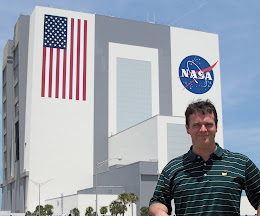Tuesday, April 14, 2020
NASA Apollo 13 Upper Stage Impacted the Moon During the Flight
CAPE CANAVERAL, Fla. -- The astronauts aboard the aborted flight of NASA's Apollo 13 may not have landed on the Moon, one section of their spacecraft did make a landing for scientific results.
The third stage of the Saturn V rocket known as the S-IVB was used to place the crew in the direction of the Moon. The S-IVB-508 stage housed the lunar lander Aquarius and the command module Odyssey, attached to its service module.
During the previous Apollo 12 landing, NASA had deployed one seismometer on the Moon's surface. The S-IVB impact occurred on April 14, 1970, at 77 hours, 56 minutes after the launch on April 11. The impact occurred 84 miles from that seismic station.
Saturday, April 11, 2020
Odyssey of Apollo 13 Became NASA's 'Successful Failure'
 |
| Crew of Apollo 13 the day before launch at the Kennedy Space Center, Fla. |
The flight of Apollo 13 has been called “a successful failure”. It was successful in how the crew worked with mission control to return home, but a failure in that the lunar landing was aborted.
A veteran of three previous spaceflights, James (Jim) Lovell commanded the flight. Command Module pilot John (Jack) Swigert and Lunar Module Pilot Fred W. Haise, both rookie astronauts, rounded out the crew.
Subscribe to:
Posts (Atom)





